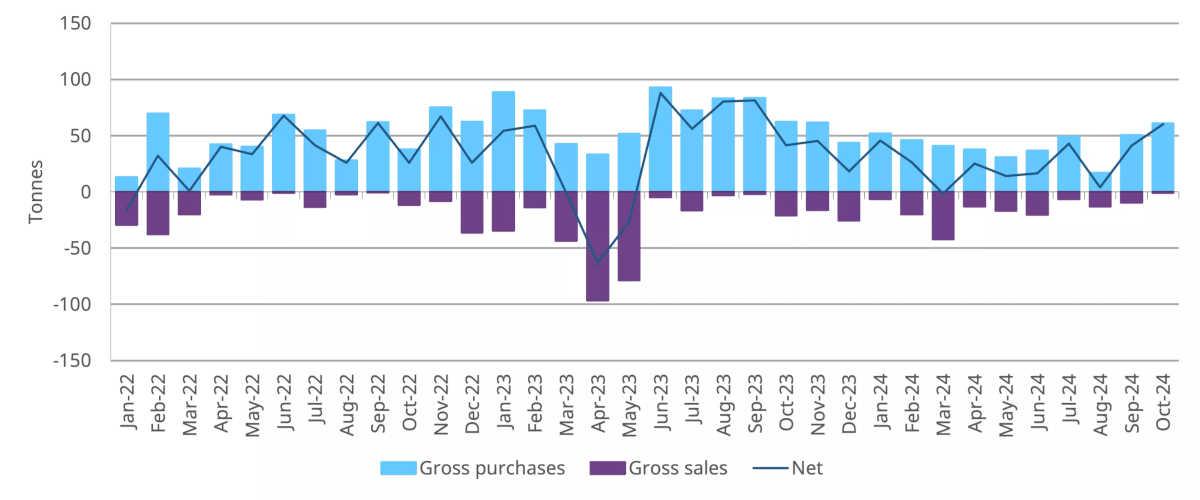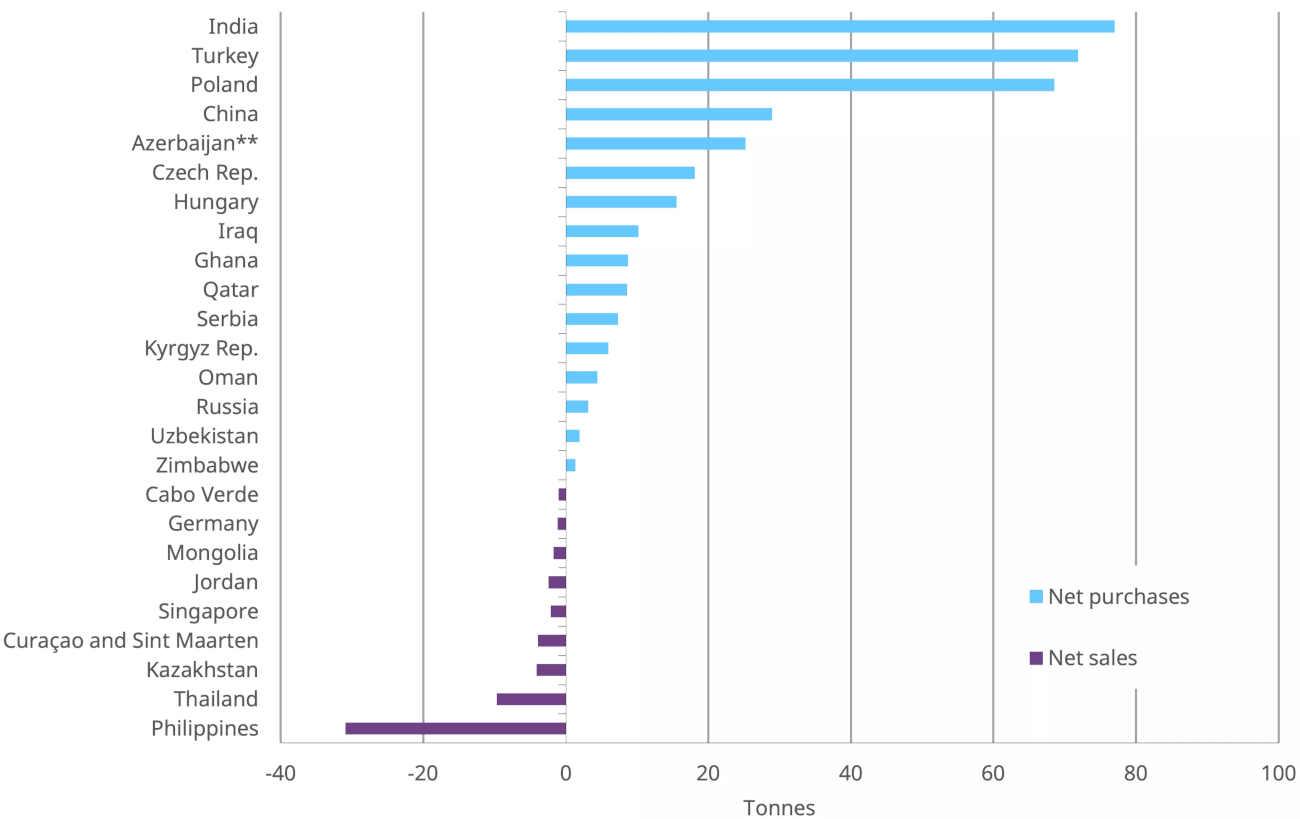Central Banks Back Up the Bullion Trucks
Beep–beep–beep. Central bankers are once again “backing up the truck” to buy gold.
The World Gold Council (WGC) recently released its central bank gold statistics for October 2024.
The chart below shows purchases (blue) and sales (purple):

Source: World Gold Council
October was the highest net purchase month in 2024, with central banks purchasing a sizable 60 tonnes.
It’s worth noting that there were almost zero sales during the month. Up until October, every month in 2024 had substantial buys and sells.
Through Q3, central banks have reported an impressive 694 tonnes of gold purchases. And that’s almost certainly an understatement because we don’t truly know how much gold China, Russia, and other countries from that bloc are purchasing. The true number for 2024 could easily be near 1,400 tonnes or higher.
Annual gold production from mines is around 3,000 tonnes, so this is a substantial percentage of new supply. At this rate, central banks alone could be buying up to 45% of newly mined gold this year.
Here’s another chart from the WGC’s recent central bank report, showing updated year-to-date net purchases and sales.

Source: WGC
Once we consider that China and Russia are likely buying far more gold than reported here, this is a very interesting chart indeed.
The largest BRICS countries are gobbling up gold like we’re on the verge of something major.
Poland, Turkey, Czech Republic, and Hungary stand out as the only NATO countries on gold-buying sprees. They happen to be the most nationalist members of NATO. No coincidence there.
And the largest gold sellers, the Philippines and Thailand happen to be major U.S. allies in Asia. These two countries are clearly still in the “king dollar” camp and are not yet buying into gold mania. Either that, or they desperately need the cash.
Confiscating Russian Assets
U.S. and EU leaders have long discussed the possibility of using more than $300 billion of frozen Russian assets to support Ukraine.
Well, it’s finally happening. On December 11th, UPI reported that the first $20 billion has been transferred to a Ukrainian account.
The United States has given Kyiv a $20 billion loan funded by Russian assets frozen since the Kremlin invaded Ukraine nearly three years ago.
The disbursement was announced Tuesday by the U.S. Treasury, whose secretary, Janet Yellen, said in a statement that the funds “will provide Ukraine a critical infusion of support as it defends its country against an unprovoked war of aggression.”
This action, while seemingly small in scope, is a primary driver of central bank gold demand. The trend of de-dollarization truly picked up steam in 2022 after Russia invaded Ukraine, which prompted the confiscation of more than $300 billion of Russian reserve assets.
As we have discussed extensively, this was a key turning point for the world monetary system. All of a sudden, central banks no longer saw their dollar reserves as risk-free assets. Overnight they became risk-laden.
At the time Russia invaded Ukraine, gold was trading around $1,860/oz. It is now up 44% from that point. An absolutely massive move in such a short period.
As we discussed in Metal Mania Starts Soon, this move has almost exclusively been driven by central bank demand.
“There’s rich irony in the fact that the primary gold bulls today aren’t individual investors, it’s the guys running the fiat printers. This is an insider buy signal at a global scale. And these aren’t fickle day traders in for a quick flip. These central banks have a new reserve policy, and it appears to heavily favor gold.”
I don’t see central banks slowing their buying pace anytime soon. The world’s monetary order is shifting, and at times like these, the safest thing to buy is an apolitical hard currency: gold.
Eventually, retail and professional investors will catch on to the trend, and then we’ll be off to the races. At that point, I believe silver will set for a big move-up.


Comments: